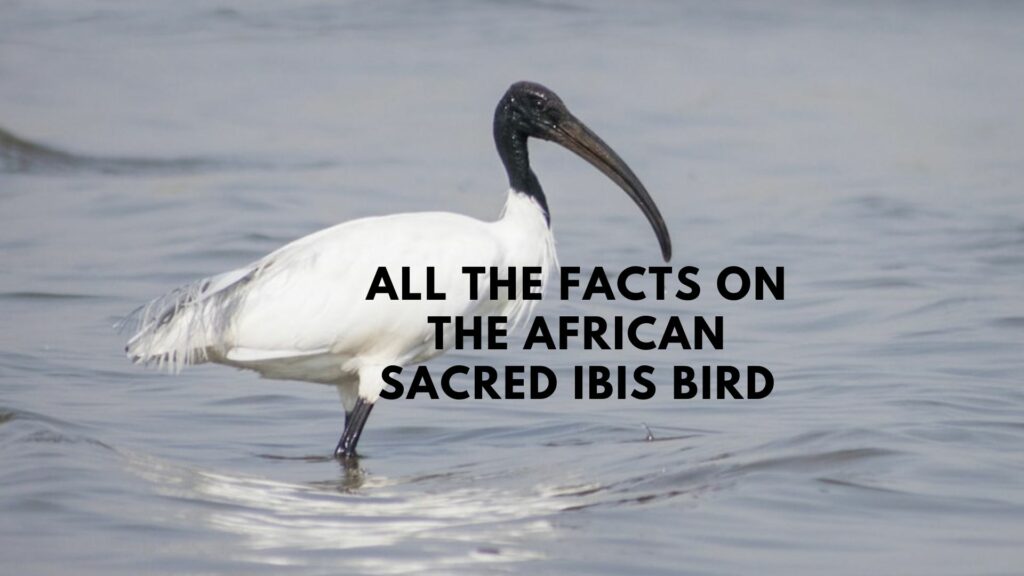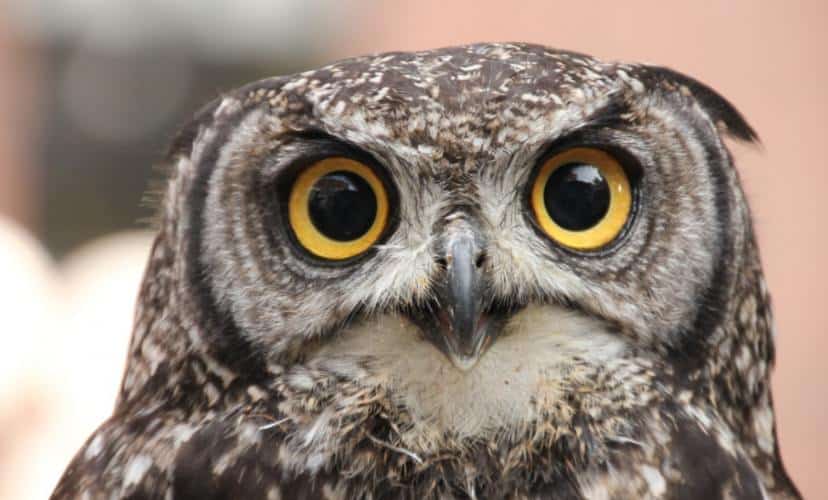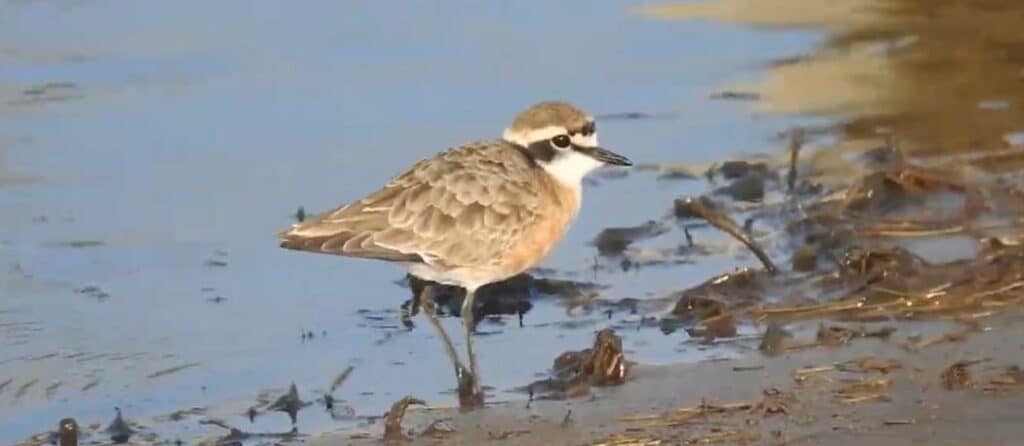When my husband and I were driving through Kruger National Park, we started noticing something hilarious: every single animal we saw seemed determined to show us its rear end. Elephants lumbering away, zebras trotting off, even giraffes walking into the distance as if to say, “This is my best side.”
After a few days of being constantly “mooned” by Africa’s finest wildlife, we decided to turn it into a game: guess the animal by the butt! And then put the pictures on my Facebook page.
And honestly, it became one of the funniest parts of our trip. Once you start paying attention, every species has its own trademark rear view: stripes, tails, markings, even posture. Some are obvious, others less so. Let’s see how many of these you can identify just from their behinds!
There are easy ones, but others are not that obvious 🙂
The Striped Showstopper

Hint: No two backsides are the same — a true work of black-and-white art.
Answer: The Plains Zebra! (yeah ‘deu’, I can hear you say, and you’re probably right)
Zebra’s behinds are probably the most famous in Africa. Their stripes act like fingerprints — no two patterns are the same — and they actually help ward off biting flies. When zebras stand close together, the stripes blend into a visual illusion that confuses predators. And let’s be honest, when they all trot away with their tails swishing in perfect rhythm, it’s hard not to smile.
🐘 The Wrinkled Giant

Hint: The only behind large enough to create their own shade.
Answer: The African Elephant.
You don’t forget seeing one of these walk away from you — that massive, wrinkled backside swaying from side to side.
Elephants’ tails are wonderfully expressive; they flick flies, communicate irritation, or give a friendly swat to a youngster following too close. Their skin is sensitive despite its thickness, which is why they love coating themselves in mud — nature’s sunscreen and bug repellent.

🦒 The Long-Legged Lady

Hint: You’ll know this one by the world’s longest set of stilts.
Answer: The Giraffe.
They’re elegance on legs — even from behind. Their tails end with a dark tuft that acts like a fly swatter, and they can swing it with surprising precision.
Giraffes spend most of their day eating, so you’ll often see them strolling away lazily to the next acacia tree. Despite their gentle looks, they can defend themselves with a kick strong enough to kill a lion.
🦌 The Fast-Food Favorite

Hint: Look for the golden arches in the bush — nature’s own McDonald’s logo.
Answer: The Impala.
We started calling them “McImpalas” because of that black “M” shape on their rump. They’re incredibly graceful and can leap over three meters high. Their markings help the herd stay coordinated while fleeing predators like cheetahs and wild dogs. Impalas are everywhere in Kruger — beautiful, nervous, and almost always facing the wrong way when you want a photo.
The Little Upwards Tail

Hint: Tail up, butt out, running like it’s late for dinner.
Answer: The Warthog.
If there’s one animal that can make you laugh every single time, it’s the warthog. When they run, their tails stick straight up like radio antennas — a signal for their piglets to follow.
They may look comical, but they’re clever diggers and use abandoned aardvark holes for burrows. You’ll usually see them kneeling to graze, front legs bent, like they’ve had enough of standing up straight.
🦁 The Royal Rump

Hint: You might spot this one disappearing into the tall grass.
Answer: The Lion.
There’s something majestic even about a lion’s backside. Muscular, powerful, and crowned with that tufted tail, it’s unmistakable. Lions use tail movements to communicate — a quick flick can mean “let’s move” while a slower swish might say “I’m relaxed.” And yes, in real life, they spend most of their time showing you their backs while sleeping under trees!
The Bullseye Butt

Hint: Looks like someone sat on a toilet seat and forgot to wipe.
Answer: The Waterbuck.
Once you see that perfect white ring on the rump, you’ll never forget it. The waterbuck’s fluffy coat gives off a musky smell that keeps insects away, and the ring helps the herd keep track of each other in tall grass. They love being near rivers or lakes — partly for water, partly because their predators hate swimming.

The Elegant Grey Ghost

Hint: Long legs, subtle stripes, and quiet grace — blink and it’s gone.
Answer: The Greater Kudu.
This is one of Africa’s most graceful antelopes. Their white stripes act as camouflage, breaking up their shape in the dappled forest light. Males grow beautiful spiral horns, and both genders are shy — we often spotted just the hindquarters vanishing silently into the bush. They truly live up to their nickname, “the grey ghost.”

The Armored Behind

Hint: Comes with built-in plating and a surprisingly small tail.
Answer: The Rhinoceros.
That thick, folded skin looks like armor, and it kind of is — though it’s sensitive enough to feel insects crawling. Rhinos often walk single file, so you may find yourself following a line of slow-moving tanks. Their sense of smell is incredible, but their eyesight? Not so much — so they sometimes react to movement more than detail, which can make for interesting encounters.
The Swampy Surprise

Hint: You might just see bubbles… or feel the splash.
Answer: The Hippopotamus.
Usually, all you see of a hippo is its ears, eyes, and the top of its back, but sometimes they turn to give you the full view — and it’s unforgettable. Hippos mark their territory by spinning their tails while defecating, flinging it in all directions (a moment we accidentally witnessed). Despite their lazy look, they’re one of Africa’s most dangerous animals and can outrun a human on land.
The Shaggy Stranger
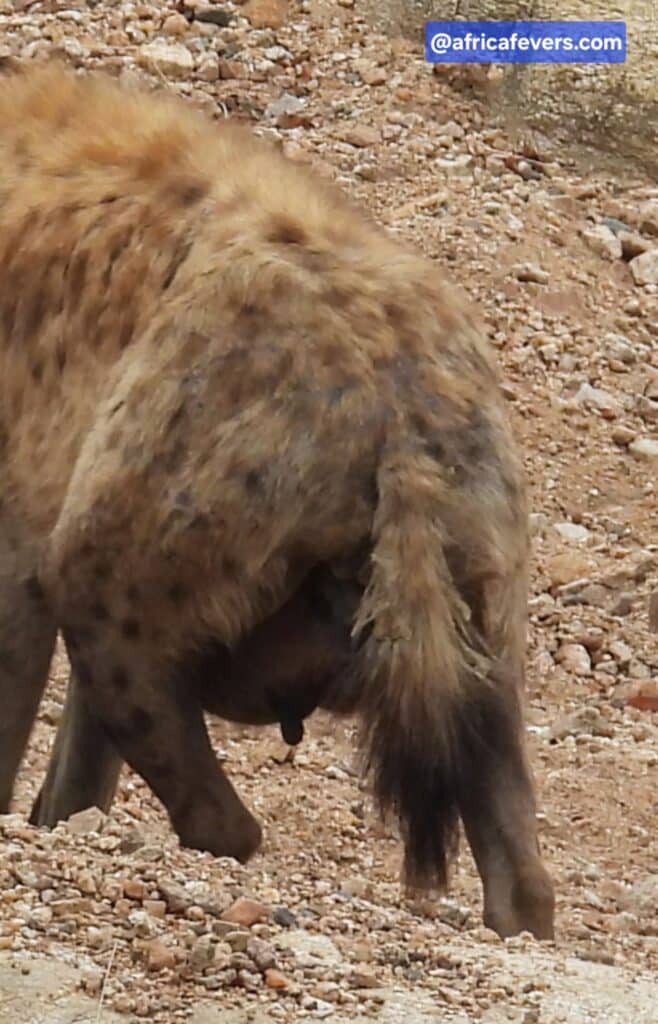
Hint: Looks like it’s wearing an old fur coat and sneaking off.
Answer: The Brown Spotted Hyena.
With their sloping backs and strong hindquarters, they’re built for endurance, often trotting for miles in search of food. Despite their reputation as scavengers, spotted hyenas are excellent hunters in their own right and live in highly organized female-led clans.
The Curious Little Fluffy Tail

Hint: Small, golden, and usually seen standing upright as if it’s on security duty.
Answer: The Yellow Mongoose.
This tiny mammal may not look impressive at first, but it’s one of the most entertaining butts you’ll see in the bush. The yellow mongoose often stands on its hind legs, tail straight down like a balance pole, scanning for danger. When it finally trots off, that fluffy tail — usually tipped with white — bobs behind like a flag.
They live in colonies, often sharing burrows with meerkats, and spend their days sunbathing, grooming, and darting for insects. It’s hard not to smile when one turns its little rear to you, tail swaying proudly as it scurries away.

🍑 Bonus Butt – The Human Safari-Goer

Hint: Khaki shorts, camera in hand, slightly sunburned.
Answer: The Tourist, of course — usually us.
Typically seen hanging halfway out of the safari jeep, whispering, “just one more photo.” Not dangerous, but easily startled by insects. Occasionally distracted by snacks or dropped lenses. Known to flee quickly when elephants approach.
Final Thoughts
So, how many did you guess right?
Our silly “butt quiz” became one of the highlights of our Kruger trip. We laughed every day as another animal turned its back on us — as if the whole park was in on the joke.
Next time you’re on safari and all you see is a vanishing backside in the bush, don’t be disappointed. Look closer — that butt might just tell you more than you think!
I wish you a happy safari!
Kind regards,
Lizzy
I now have a YouTube channel as well!
YouTube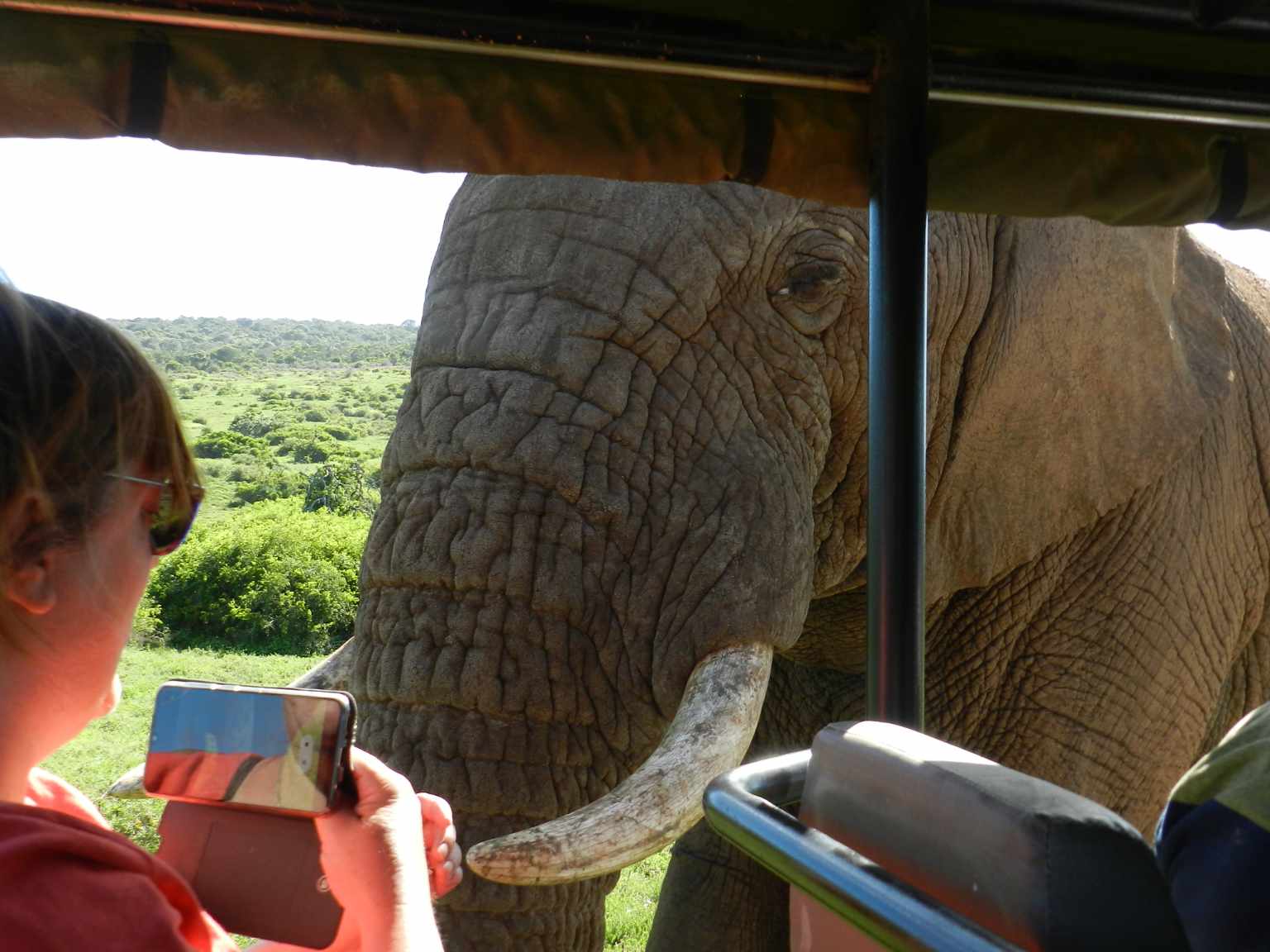
Hello Africa travellers!
Who am I? Well, the least you can say is that I am quite crazy about Africa, its nature, its climate, its culture, and more.
As a young woman in my twenties, I had already traveled to several African countries by traveling along in an overlander on my own and mostly camping ( or glamping ) and just fell in love with the diversity of it all.
So much, so that at the age of 26, I went back to university to study biology, which, unfortunately, I couldn’t finish because of health reasons (yes, I got sick from a tropical disease, oh cynicism). But this did not stop my dream of traveling back to Africa several times, and I still do.
My dream was back then to leave Europe and go study animal behavior, especially the elephants (sure, that’s every girl’s dream haha), but I am also very much intrigued by hyenas and other “ugly African animals“.
So, I “kind of” have a little bit of a scientific approach to my articles, when I write about African birds, for example. And most of all: the passion.
But life goes on, you move from one side of the country to the other, you get sick again and top it off with lower back problems, and before you know it, you are over 50 hahaha!
Now, I still travel to Africa, but take it a bit “easier” than the good old camping days, and stay in comfortable, yet affordable accommodations, together with my husband Wouter.
These are some of the countries I have traveled to: Kenya, Tanzania, Zanzibar, Malawi, Zambia, Zimbabwe, South Africa, Namibia, Botswana, Tunisia, and a little bit of Lesotho LOL .
While clearly not being African territory, but Spanish, I also visited Gran Canaria and Tenerife, and location-wise, I consider them “African”, because of their climate and nature, sue me :-p
The last trip I took was to South Africa in the year 2023, and it sure got the fevers for Africa back! From the Barberton mountains to the Drakensberg and the Southcoast, one month wasn’t enough at all to see the whole country, so we’ll be back! At ease and with a little bit more luxury than in my younger days haha!
I wish you happy travels!
Kind regards
Lizzy






